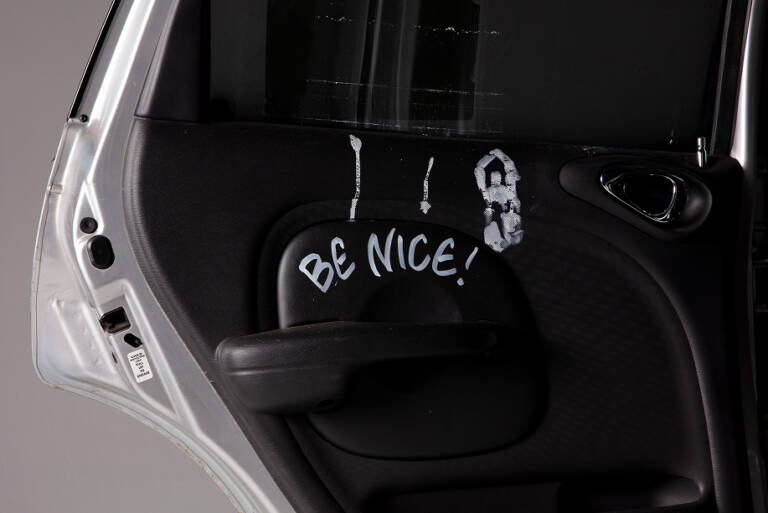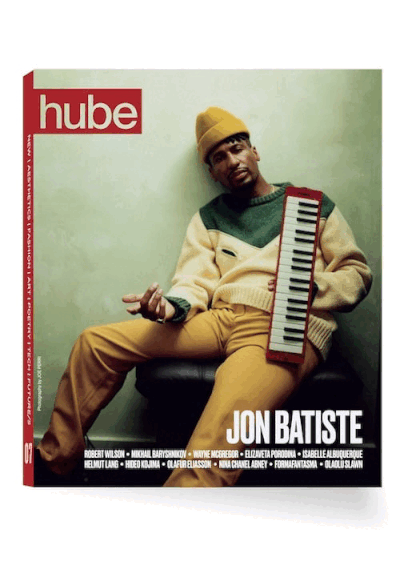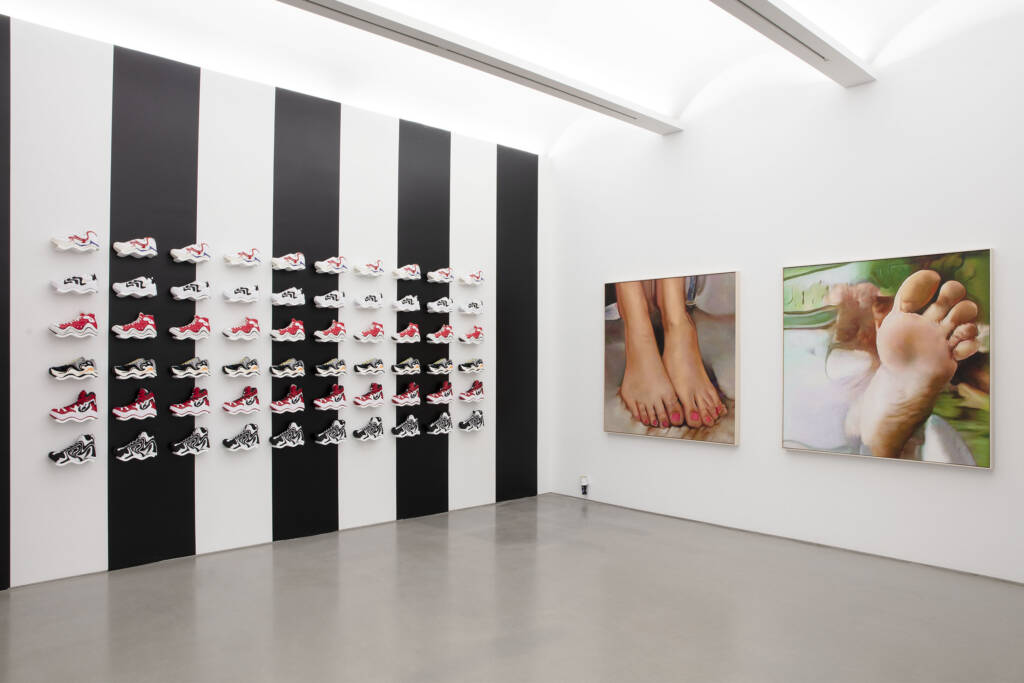
Exhibition view, NO MORE TEARS, I’M LOVING IT, 2022, Perrotin, New York
Photography by GUILLAUME ZACCARELLI, courtesy of MSCHF and PERROTIN
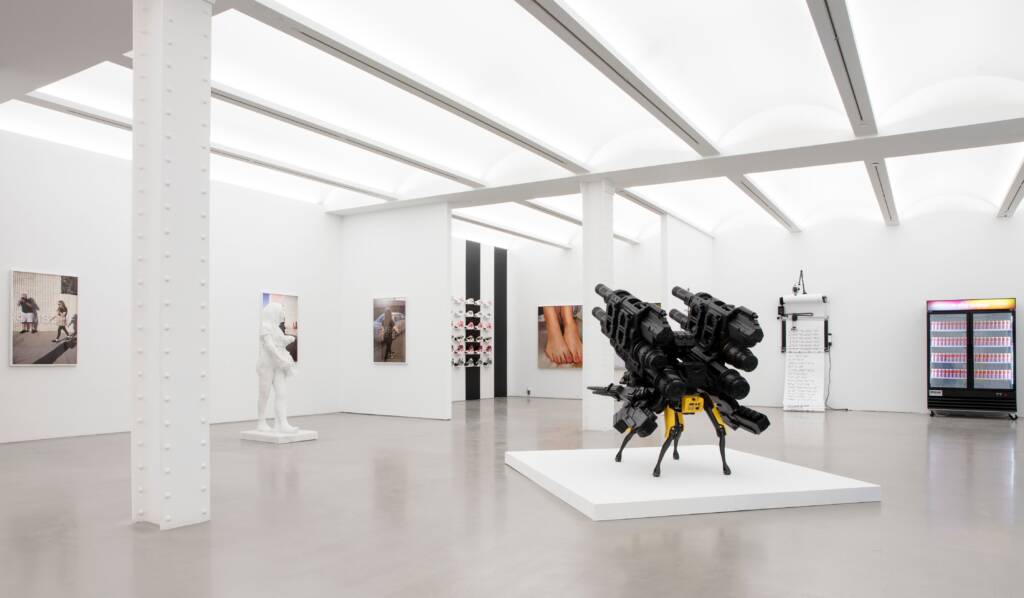
Exhibition view, NO MORE TEARS, I’M LOVING IT, 2022, Perrotin, New York
Photography by GUILLAUME ZACCARELLI, courtesy of MSCHF and PERROTIN
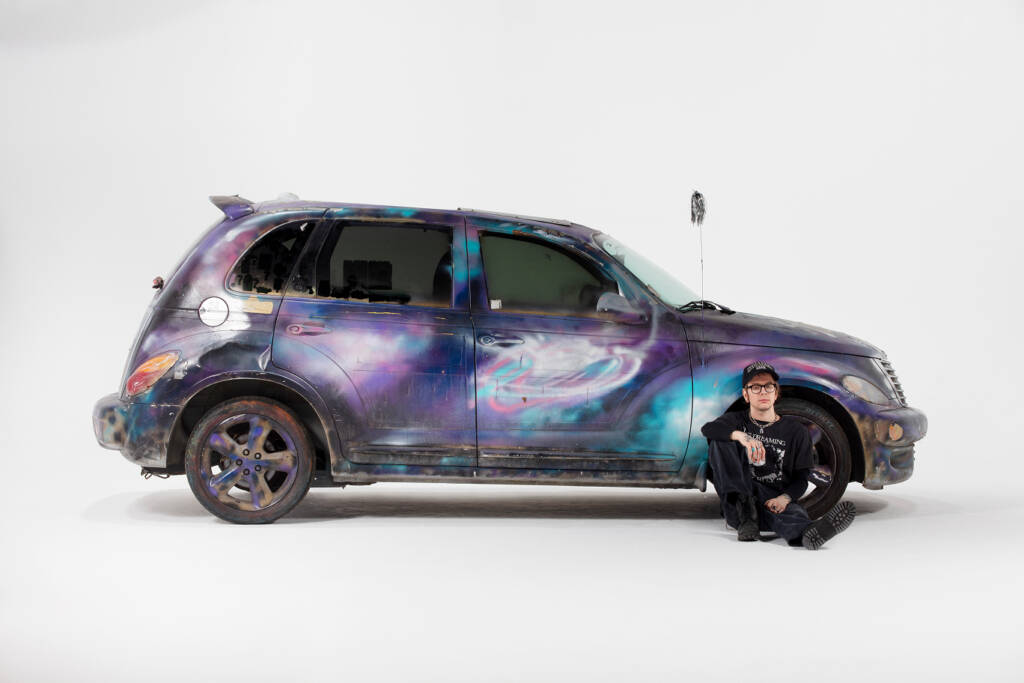
Public Universal Car, 2022
Photography by GUILLAUME ZACCARELLI, courtesy of MSCHF and PERROTIN
Step into the world of MSCHF, where boundaries are redefined and conventions are challenged with each daring creation. Based in Brooklyn, the avant-garde collective seamlessly blends culture, technology, and social commentary in works designed to provoke, delight, and challenge their audience.
From the hype-worthy Big Red Boot to the microscopic Louis Vuitton handbag that fetched approximately $63,000 at auction, MSCHF’s founders, Kevin Wiesner, Lukas Bentel, and Gabriel Whaley, drive their mission forward with unmatched imagination and more than a hint of irony.
hube: You remix and repurpose many different mediums and forms, creating works that transcend the categories of art and design. Do you perceive a boundary between the two?
Lukas Bentel: I don’t think we see it as a boundary; I think all spaces are good spaces to make art. And honestly, oftentimes, the ones that have the boundary around them are less effective to make good work.
Kevin Wiesner: I also believe that art, particularly conceptual art, serves as the overarching framework for all of MSCHF’s creations at the highest lev-el. Within this framework, there are diverse specialties, each serving the initial concept.Our creations are driven by whatever best serves the concept, which, in my opinion, is often rooted in art.
h: Your work is characterised by freedom, audacity, and irony. Do you consider how future audiences might perceive it?
LB: I think, to an extent, we’re much more concerned with the present. This is something that we’ve talked about quite a bit internally-whether or not we are making futuristic or sci-fi work-and I would say very much that we aren’t. We’re working in a way that is an intensification of nettle, and we’re not really concerned with what it will look like in the future. A term that we use frequently when discussing where our pieces fit is the “spicy present.”
KW: They’re essentially intensifications of what already exists, which, l’d say, offer a different perspective on the question. I believe you can contextualise MSCHF within broader historical art movements. Hopefully, in the future, there might be a progression from that.
We’re consciously structured as a business, utilising powerful tools for creating anything and everything. This project is conceptual, but we see the tradition [we are a part of] evolving linearly from various artistic move-ments, including factory production, critical speculative design, and experimental online artist groups like K-HOLE and DIS. I envision this kind of evolution continuing. While there are uncertainties about the future, MSCHF can serve as a link in that evolving chain.
